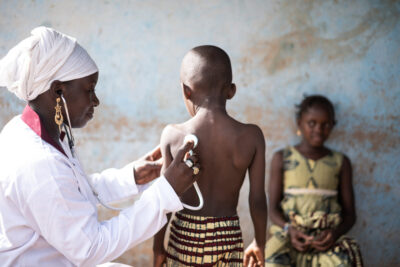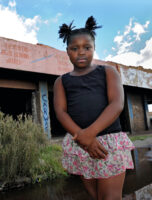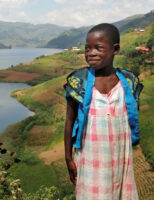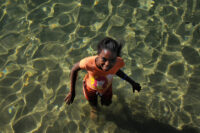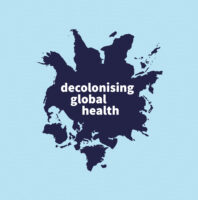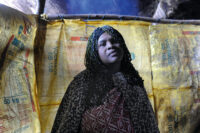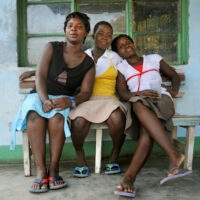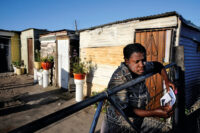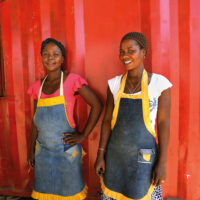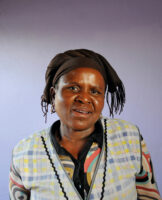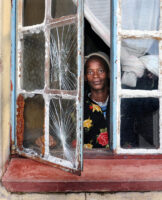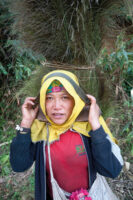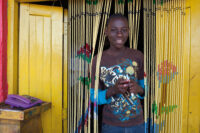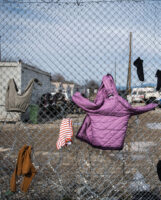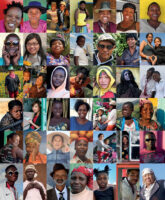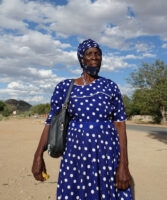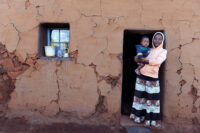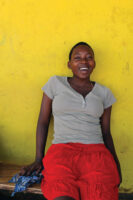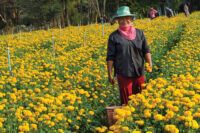Main content
Shortly after the New Year, the reporting of emerging clusters of pneumonia from an unknown pathogen in Wuhan, China, began to draw the attention of infectious disease experts and public health officials globally. In spite of Chinese control efforts, including what up until that point was the largest population lockdown in human history, it did not take long for the localized viral infection to disperse itself ubiquitously throughout much of the world. As of the end of June, SARS-CoV-2, the once novel coronavirus, has claimed nearly half a million lives and affected roughly 213 countries and territories. SARS-CoV-2 is categorized as an emerging infectious disease, defined by the World Health Organization (WHO) as any disease that has ‘appeared in a population for the first time, or that may have existed previously but is rapidly increasing in incidence or geographic range’.[1] Emerging infectious diseases are primarily zoonotic, meaning they are transmitted to humans from animal hosts, and have been the culprits of most pandemic threats in the past decades, like SARS-CoV (SARS), Ebola, Swine influenza and Zika. With emerging infectious diseases now making an appearance on the global stage every few years, it is vital to look at the specific characteristics of SARS-CoV-2 and the coronavirus disease (Covid-19) that have allowed the virus to evade global control efforts and pose such a grave threat to society. Comparing SARS-CoV-2 to disease agents that have caused former pandemics and global health crises helps to contextualize the threat of the current viral outbreak, and also illuminates how response efforts have been shaped in the wake of international disease threats.
Transmissibility
It was late in the year when health care practitioners in Southern China first encountered cases of a mysterious viral illness that manifested as severe pneumonia leading to acute respiratory distress. With variant strains of avian flu starting to become a seasonal norm, Chinese public health officials did not at first sound any global alarm bells. After spreading to Beijing and then Hong Kong, it boarded planes bound for other continents and began to make its way across land. Almost simultaneously, three separate labs in Hong Kong, Germany, and the United States of America, finally identified the pathogen causing this fatal pneumonia as a novel coronavirus. The Global Outbreak Alert and Response Network was activated, and the WHO provided a rapid and measured response helping to advise every affected nation. By July, the virus was controlled. But this was 2003, and the novel coronavirus was SARS.
The international community learned numerous lessons from SARS, namely about the importance of having strong disease surveillance and centralized health systems. The outbreak led to many countries boosting their infectious disease control capacities, which included the creation of the Center for Infectious Disease Control here in the Netherlands, the resources of which have been integral to helping the control efforts for combatting the current outbreak nationally. Global detection systems, however, had evidently not prepared enough for handling the very different transmission dynamics of the SARS coronavirus successor, SARS-CoV-2.
The basic reproductive number, or Ro, refers to the average number of cases generated by an infectious person, and is considered an important indicator of transmissibility. Although the Ro of SARS-CoV-2 is estimated to be only slightly higher than that of SARS (3-5.3 and 2-5, respectively), SARS-CoV-2, possesses numerous qualities that make it not only more transmissible, but more able to evade the surveillance measures that had been able to stop SARS.[2] The period of infectiousness in SARS-CoV-2, for example, not only begins before the onset of symptoms, but in many cases peaks days before most people even know they are sick.[3] This makes mitigating the spread of the virus much more challenging than SARS, which during its 2003 outbreak was transmitted primarily when patients were severely ill and clearly symptomatic. Furthermore, there were only a few known documented asymptomatic SARS cases, which differs vastly from SARS-CoV-2, where asymptomatic cases are suspected to climb into the millions globally. Epidemiologist are still seeking to understand the capacity for asymptomatic cases to spread the virus, but like all unknown elements, it presents further challenges in creating control strategies and finding methods to establish normalcy in a world with Covid-19. Additionally, other elements such as longer relative incubation periods for SARS-CoV-2 (most likely 3-10 days, but potentially as long as 14) may have facilitated its spread during the initial outbreak, allowing people to carry the virus far from disease epicenters under the assumption that they had not contracted the virus since they were not yet sick.[2]
Pathogenicity
Ten years after the last cases of SARS were treated, a much more virulent threat began lurking in the jungle of Southern Guinea. By the summer of 2014, the Ebola virus disease (EVD), never before seen in Western Africa or able to reach an urban area, had infiltrated the capital cities of Guinea, Sierra Leone and Liberia. For two chaos driven years, the worst Ebola outbreak in history rocked Western Africa, sending ripples of fear that the epidemic would spread globally.[4] EVD is infamous for its devastating hemorrhagic symptoms and high pathogenicity, with case fatality rates (CFRs) from previous outbreaks being as high as 90%. The CFR for the 2014-2016 West Africa Ebola outbreak was 40%, making early estimates of SARS-CoV-2 appear relatively low at 2.3%.[2] With SARS-CoV-2, however, the virus’s capacity to transmit so efficiently, ability to evade control, and prevalence worldwide in addition to its pathogenicity is what makes it so lethal. To understand the true pathogenicity of SARS-CoV-2, one can compare its CFR to another virus that transmits globally, the seasonal influenza. Seasonal influenza, with a CFR of under 0.1%, is over twenty times less likely to cause death than SARS-CoV-2,[5] which would seemingly discredit the minority of people who have claimed that Covid-19 is just another flu’.
The Ebola outbreak being primarily contained to three countries in West Africa does not mean that it was not a global threat. Partly due to very late intervention from the WHO – for which they have been vehemently criticized – the virus became unmanageable in West Africa and made appearances in seven other countries.[4] Following the outbreak, the global health community demanded that the WHO improve responsiveness to emerging infectious diseases.[6] In 2019, perhaps with the understanding that the next emerging infectious disease outbreak was merely a matter of time, the WHO did make major adjustments to help them focus on preparedness and improve emergency response – a component that would become useful just months after its implementation.[7]
Epidemiology
As Ebola terrorized West Africa, a mosquito-borne pathogen called Zika virus was making its way through much of Brazil and spreading throughout South and Central America. While Zika virus-associated birth defects rose at incredible rates, the disease strangely began to recede within a couple of years of its initial emergence. Epidemiologists suspect that Zika virus had hit its herd immunity threshold (HIT).[8] Herd immunity occurs when a certain percentage of the population becomes immune to a disease, either through contracting the illness or from getting vaccinated. The herd immunity required to reduce transmission to below epidemic levels varies for every disease, but is in theory easier to achieve in diseases like Zika that are limited to specific geographic boundaries or demographic factors, in this case to areas in which the Zika transmitting mosquito was endemic.
SARS-CoV-2, conversely, is ubiquitous and not limited by any geographic area, gender, race, or for the most part, age, although it has shown significantly higher associations of severe disease and mortality with older age groups. The herd immunity needed for reduced transmission of SARS-CoV-2 to below epidemic levels is estimated to be somewhere between 50% and 75% of the population.[9] These estimates take many characteristics of the pathogen into account. There are very few, if any, health care systems in the world capable of handling the volume of Covid-19 patients if a country were to attempt to reach herd immunity as a control measure. Even if that weren’t the case, some would suggest that allowing for 75% of the population to get infected with a disease that has such a high case fatality rate (CFR) would result in an unconscionable amount of deaths. Perhaps most significantly, herd immunity is dependent on the population becoming immune. As we still have no conclusive evidence that Covid-19 infection grants lifelong or even long-term immunity, reaching herd immunity and ultimately controlling SARS-CoV-2 will most likely be contingent on the development of a vaccine.
Conclusion
The characteristics that make SARS-CoV-2 so transmissible, pathogenic, and widespread have presented extreme challenges to disease control specialists, as well as to a considerable percent of the global population in some form or another. During the 1918 Spanish influenza pandemic that killed between 20 and 40 million people, governing bodies issued public health warnings centered around three components: try to stay inside, socially distance yourself from others whenever possible, and if you must leave your house wear a mask. If it is disheartening to see how little has changed in our individual capacity to control the spread of a pandemic virus, perhaps there is solace in the understanding that remarkable advances have been made in surveillance, diagnostics, and vaccine production, largely informed by previous epidemics of emerging infectious diseases. Learning from the disease specific elements that made SARS-CoV-2 so uncontainable will help shape current control efforts and inform future outbreaks. Every large-scale epidemic should come with numerous lessons not only for containment, but for preparedness, as the arrival of a new pandemic threat is merely just a matter of time.
References
- LeDuc, JW, Barry, MA. SARS, the first pandemic of the 21st Century [Internet]. Emerg Infect Dis. 2004 Nov;10 (11), 226. DOI: 10.3201/eid1011.040797-02
- Chen J. Pathogenicity and transmissibility of 2019-nCoV: a quick overview and comparison with other emerging viruses. Microbes Infect. 2020 Mar;22(2):69-71. DOI:10.1016/j.micinf.2020.01.004
- He X, Lau EHY, Wu P, et al. Temporal dynamics in viral shedding and transmissibility of COVID-19. Nat Med. 2020 May;25(5):672-675. Epub 2020 Apr 15. DOI: 10.1038/541591-020-0869-5
- Centers for Disease Control and Prevention [Internet]. 2014-2016 Ebola outbreak in West Africa; [reviewed 2019 Mar 8]. Available from: https://www.cdc.gov/vhf/ebola/history/2014-2016-outbreak/index.html
- Russell TW, Hellewell J, Jarvis CI, et al. Estimating the infection and case fatality ratio for coronavirus disease (COVID-19) using age-adjusted data from the outbreak on the Diamond Princess cruise ship, February 2020. Euro Surveill. 2020 Mar;25(12):2000256. DOI:10.2807/1560-7917. ES.2020.25.12.2000256
- World Health Organization [Internet]. Q&A: influenza and COVID-19: similarities and differences; 2020 Mar 17. Available from: https://www.who.int/emergencies/diseases/novel-coronavirus-2019/question-and-answers-hub/q-a-detail/q-a-similarities-and-differences-covid-19-and-influenza?
- World Health Organization Regional Office for South-East Asia. Five-year regional strategic plan to strengthen public health preparedness and response [Internet]. India: World Health Organization, 2019-2023; 2019. 35. Available from: https://apps.who.int/iris/bitstream/handle/10665/326856/9789290227236-eng.pdf?sequence=1&isAllowed=y
- Netto EM, Moreira Soto A, Pedroso C, et al. High Zika virus seroprevalence in Salvador, Northeastern Brazil limits the potential for further outbreaks. mBio. 2017 Nov 14;8(6)201390-17. DOI: 10.1128/mBio.01390-17
- Britton T, Ball F, Trapman P. A mathematical model reveals the influence of population heterogeneity on herd immunity to SARS-CoV-2. Science. 2020 Jun 23;eabc6810. DOI: 10.1126/science.abc6810. Online ahead of print

